Location and study species
The study took place near the town of Slite on the island of Gotland, Sweden between May 22nd and July 25th, 2023. Three species of butterflies were studied: the Apollo (Parnassius apollo), the Large Blue (Phengaris arion) and the Marsh Fritillary (Euphydryas aurinia). Individuals of each species were located and studied in their natural habitat.
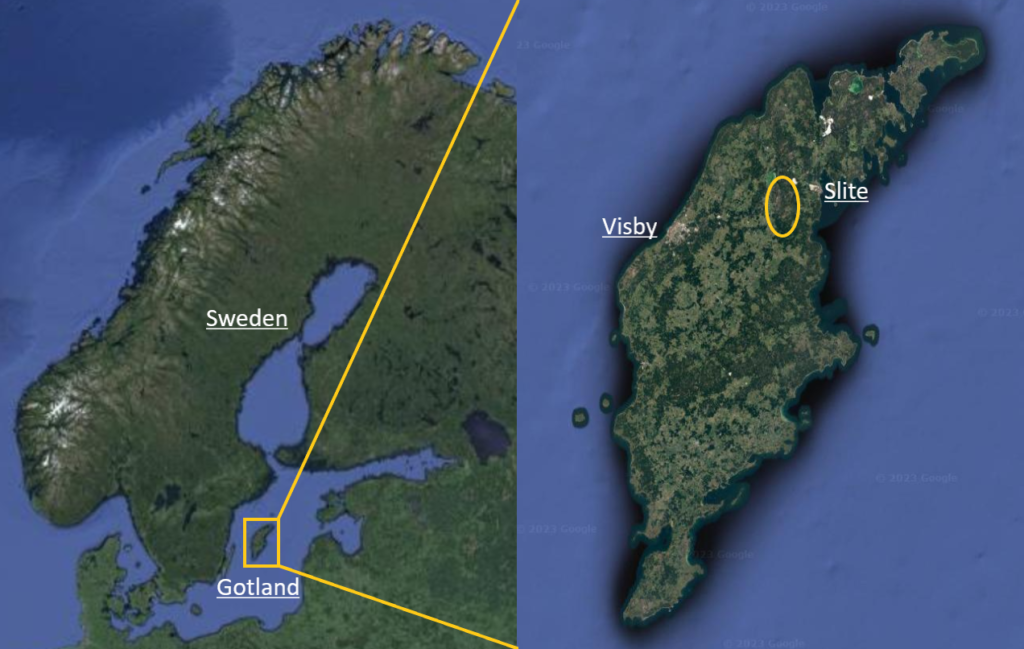
Choice of oviposition spots
Apollo and Large Blue females were observed for oviposition behaviour, and once performed, a circular sample plot was set up around the spot where the behaviour occurred. The sample plot was divided into four sections using a hula hoop and measuring tapes, with the largest section having a diameter of 20 m Within this sample plot, proportions of relevant habitat variables (host plants, trees, bushes etc.) were estimated. Because the Large Blue oviposits strictly on its host plant, Thymus serpyllum, the developmental stage of the bud where oviposition took place as well as that of surrounding host plant buds were included as variables for this species. The data collected at the oviposition spots were compared with data from random spots created in ArcGis Field Maps to see if there were any significant differences for any of the variables on the probability of oviposition.
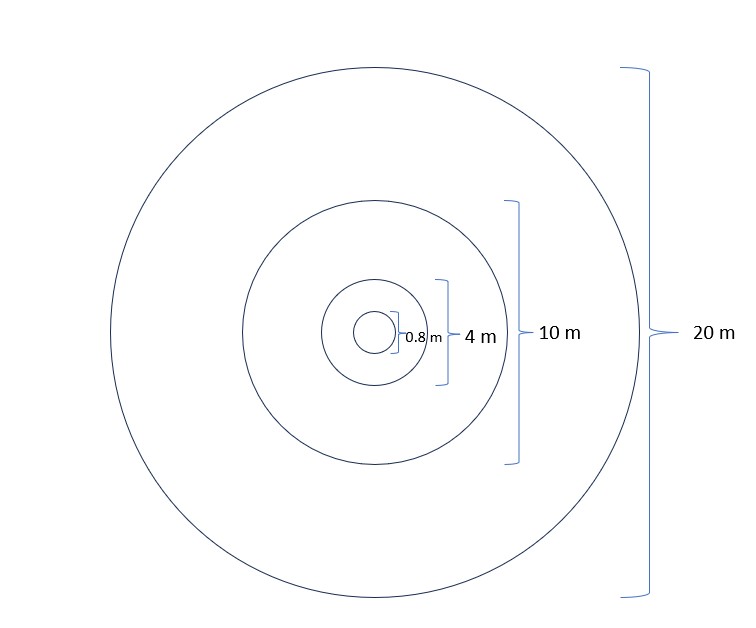
Olfactory and sunlight orientation
Apollo larvae were studied for their orientation abilities based on olfactory cues from host plants, as well as whether their surrounding habitat was sunny or shady.
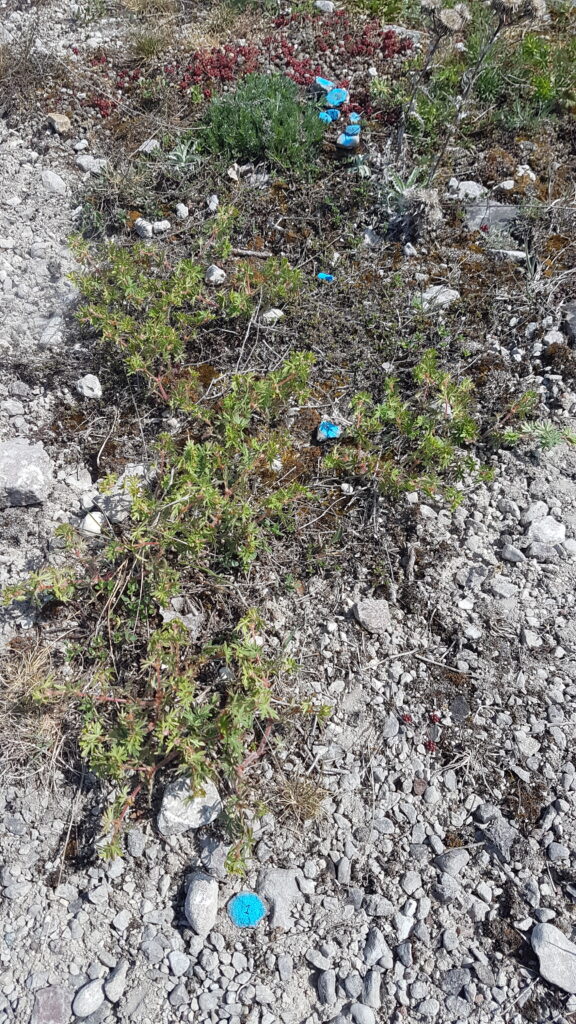
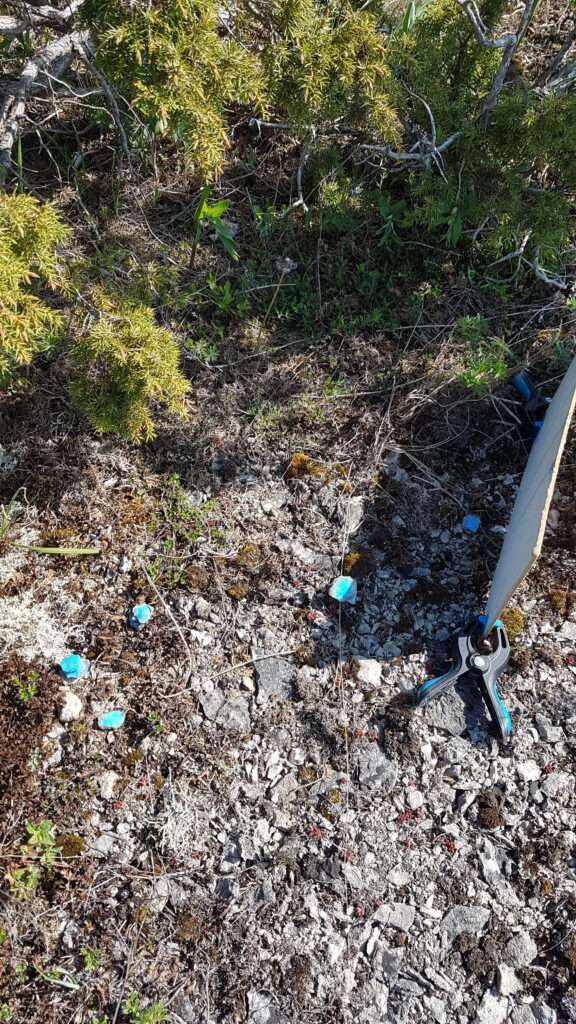
For the olfactory study, the larvae’s ability to detect their host plant, Sedum album, based on wind direction was examined. Each larva was placed on the ground at a distance of 100 cm from a cluster of host plants and allowed to roam freely for 10 minutes. At the start of every minute, a small, coloured pebble was placed on the ground to trace the larva’s path and allow its final distance to the host plant cluster to be measured. Each larva was tested twice, both upwind and downwind, to see if wind direction would have a significant effect on the final distance at the end of the 10 minute-trial.
For the sunlight study, each larva was placed in a spot surrounded by bushes or trees that provided shade on all but one side leading out into an open, sunnier area. A small wooden board was used to block out even more sunlight and to limit the path the larva could take to reach the open area. Each larva was released in the shade behind the wooden board and had its path traced with coloured pebbles over 10 minutes. The final position at the end of the trial was recorded as either “sunny” or “shaded” and used to determine the larva’s habitat preference.
Flight patterns over grazed vs. ungrazed grassland
Marsh Fritillaries were studied for their probability of crossing different habitat edge types. A study plot was set up in a patch of ungrazed grassland using tapes laid across the ground forming a large square divided into 10 smaller squares. Adjacent to one of the four edges of the plot was a patch of grazed grassland. When a butterfly was spotted within the study plot, each small square it visited was recorded until it left the plot or remained perched for five minutes. Two flight patterns were studied: 1. Crossing the edge completely, and 2. Crossing and returning.
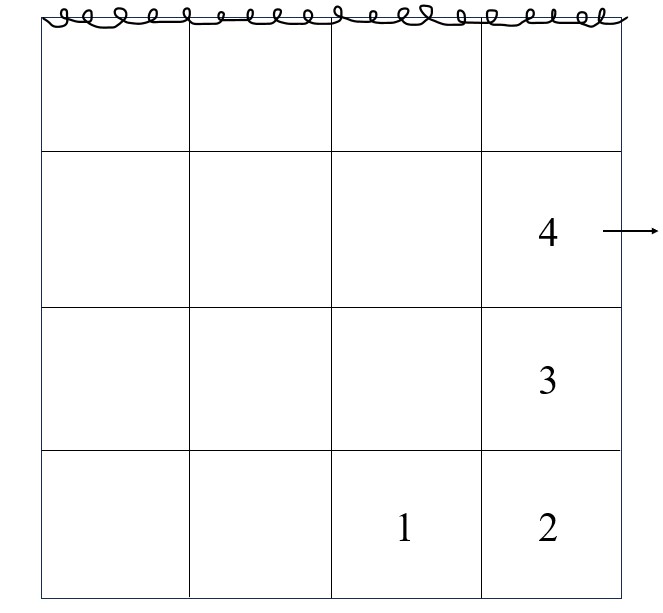
In addition, the effects of other habitat factors on the flight patterns of the butterflies were studied by estimating proportions of nectar plants and host plants in each small square, and then counting the number of butterflies that visited each square. Furthermore, the distance (in squares) to the grazed edge was also included as a variable.
Data analysis
The following statistical tests were performed in RStudio for each part of the study:
- Oviposition preference: generalized linear model + binomial distribution (logistic regression), Tukey test
- Olfactory orientation: paired-samples t-test
- Sunlight orientation + edge crossings: chi-squared test
- Square preference: generalized linear mixed model + poisson distribution